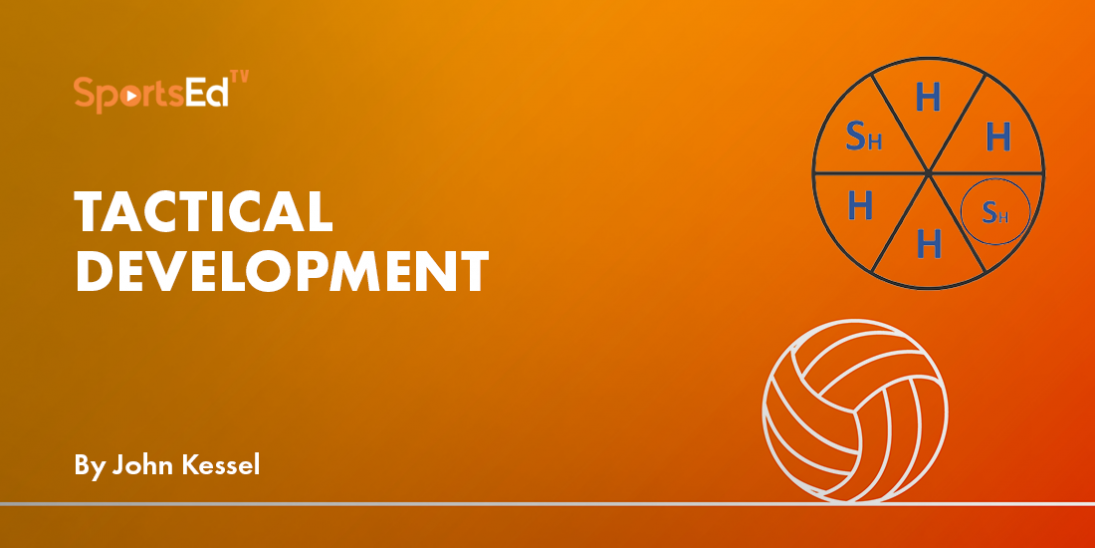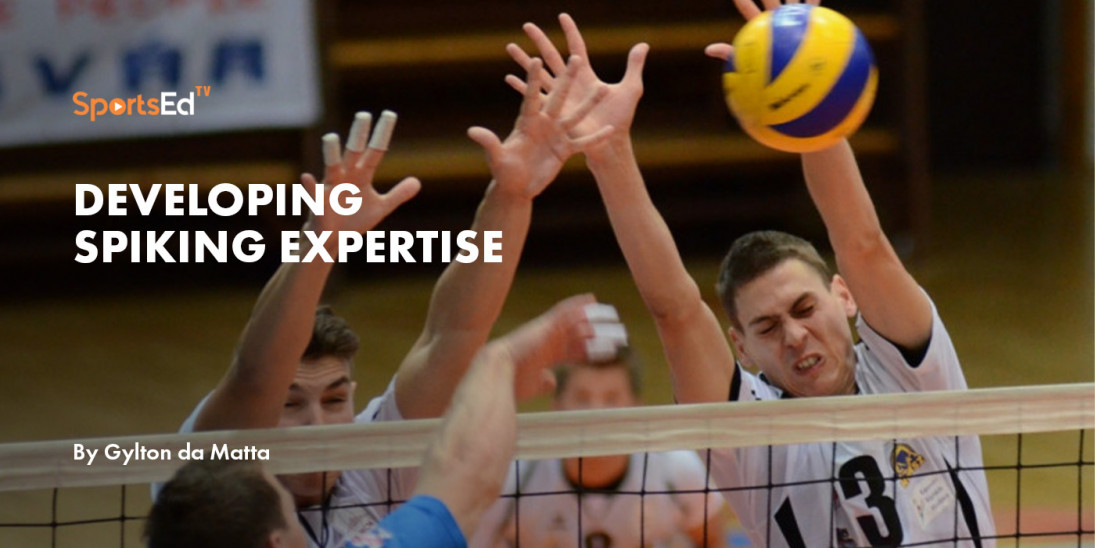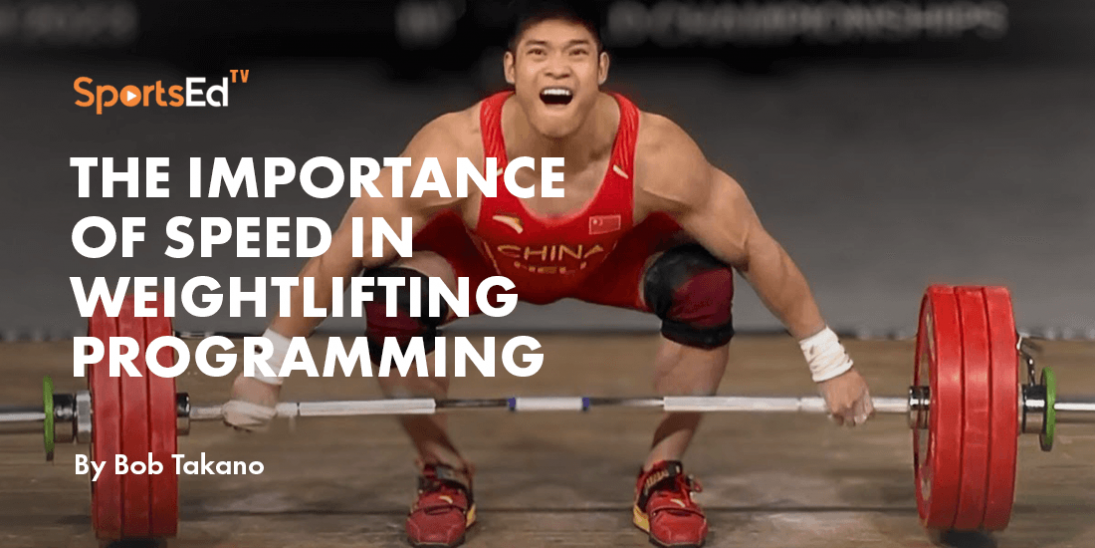Volleyball, Weightlifting
Welcome and thanks for visiting...

8 Ways To Make Your Weightlifting Program Better
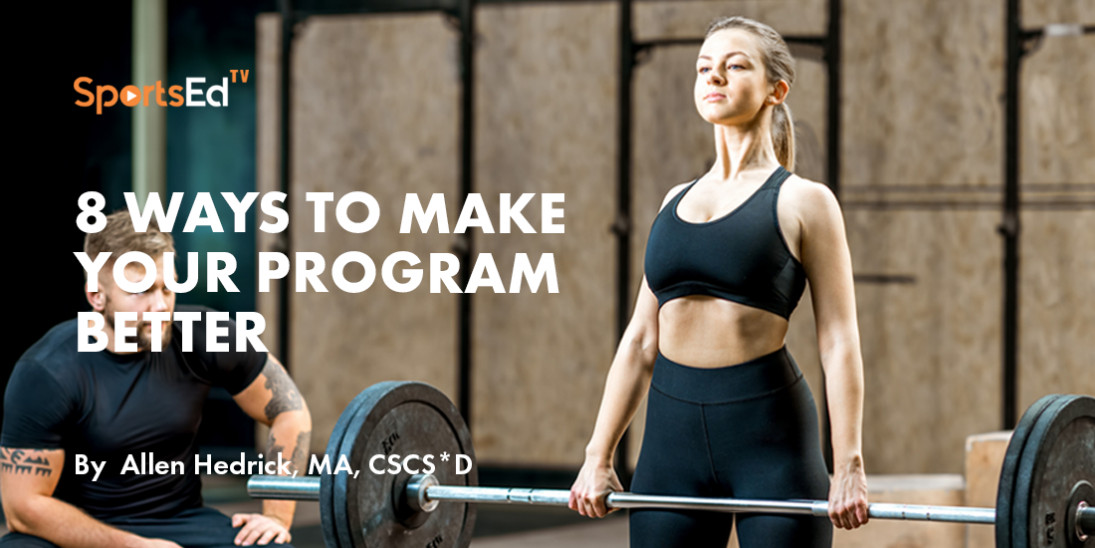
Introduction
There is a significant amount of new information available for strength and conditioning coaches through professional journals, text books, and the internet. Research has provided information on new ways to approach training, new exercises or movements have been created to assist in both performance enhancement and injury reduction, and new technology and equipment is constantly being developed. The profession continues to evolve and expand continuously, and younger coaches may have an advantage in terms of being exposed to and being made aware of this continuous flow of new information.
However, there is also a benefit to having a significant level of experience working in the profession. This article will attempt to highlight some of the things I learned during my nearly 30 years in the profession that made me a more effective strength and conditioning coach for my athletes.
1. Be Yourself
Most importantly, be yourself, be authentic. There are a number of approaches that strength and conditioning coaches can take that have been shown to be effective. Some coaches take a loud, high energy, bouncing off the wall type of approach when working with their athletes. If this fits your personality, if it comes naturally and is not forced, then be this type of coach. There are certainly strength and conditioning coaches who fall into this category who are very successful, so if this fits you, use this is approach.
In contrast, some strength and conditioning coaches take a more business-like approach. That is, they present the training plan to their athletes, communicate the expectations, and then guide their athletes through the execution of the plan. If this quieter, businesslike approach fits your personality, then present yourself in this way. I certainly fall into this category, it matches my personality, and it can be equally as effective to the coaching style previously described.
Neither approach is wrong or right or better or worse. Adopt a style that fits you best and your athletes will accept and buy into your authenticity. After that, go attack the coaching aspect of the job so that your plan is executed as well as possible.
2. Plan Ahead – An Example

Know what the plan is today, tomorrow, and six months from now. Long term planning is key to most effectively getting your athletes from where they are currently to where you want them to be when it comes time to compete.
For me this involved a two-step process. Once I knew the schedule I was working with (e.g., start of the offseason, any breaks in training, start of practice, start and end of the competitive phase), I designed my periodization schedule around those dates. I knew how many weeks of offseason training I had available and I broke up by training cycles into appropriate length cycles based on that information. I always developed my training cycles first and then went back and started building the actual training plan, selecting exercises to match the training goals during each training cycle.
For example, the following shows the sequence of training cycles I used with the volleyball athletes at Colorado State University – Pueblo:
Cycle: Introduction
Dates: December 18-January 14
Length: Four weeks
Goal: Maintain strength and power during Christmas break
Cycle: Hypertrophy (1 – Primary emphasis) / Strength (2 – secondary emphasis)
Dates: January 15-February 18
Length: Six weeks
Goals: (Scheme 1) Increase muscular size / (Scheme 2) Increase muscular strength
Note: The scheme 1 and scheme 2 approach will be described in the next section
Cycle: Strength (1 - Primary emphasis) / Hypertrophy/Endurance (2 – secondary emphasis)
Dates: February 26-April 1
Length: 5 weeks
Goals: (Scheme 1) Increase muscular size / (Scheme 2) Increase muscular strength
Cycle: Strength 2 (1 - Primary emphasis) / Hypertrophy/Endurance (2 – secondary emphasis)
Dates: April 30-June 3
Length: 5 weeks
Goals: (Scheme 1) Increase muscular size / (Scheme 2) Increase muscular strength
Cycle: Power 1 (1 - Primary emphasis) / Hypertrophy/Endurance (2 – secondary emphasis)
Dates: June 4-July 8
Length: 5 weeks
Goals: (Scheme 1) Increase muscular size / (Scheme 2) Increase muscular strength
Cycle: Power 2 (1 - Primary emphasis) / Hypertrophy/Endurance (2 – secondary emphasis)
Dates: July 9-August 12
Length: 5 weeks
Goals: (Scheme 1) Increase muscular size / (Scheme 2) Increase muscular strength
3. Scheme 1 and Scheme 2 Approach
I evolved into using this form of undulating periodization after having been in the profession for several years. Early in my career, for example, if it was a hypertrophy cycle, then each training day was devoted strictly to training for hypertrophy. The training variables were manipulated on each training day to emphasize the development of hypertrophy.
The problem with this is, completely emphasizing one training adaptation, at the exclusion of others, can have an unwanted negative effect. For example, when training for hypertrophy, a typical approach is to increase the number of repetitions and reduce the rest times. While this approach can be beneficial when training for hypertrophy, it can have a negative effect on strength levels because the intensity of training, by necessity, is reduced.
In contrast, for example, when training for strength the number of repetitions is reduced and the rest times are extended, which may not be best for developing or maintaining muscle mass. This is where the two-scheme approach can be effective because both training adaptations are addressed during the same training cycle. For example, during a strength cycle the primary emphasis is strength (scheme 1) and strength is addressed twice per week. The secondary goal is hypertrophy (scheme 2) and hypertrophy is trained once per week. In this way, the goal of increasing strength is addressed without excluding the need to maintain/develop muscle mass.
As a result, once the introduction cycle is completed, where the goal is simply to prepare the athlete for the more demanding training to follow, each of the other training cycles makes use of the multiple scheme approach to make the training program more effective.
4. Periodize Exercise Selection
I don’t recall ever seeing a discussion on this topic but part of the periodization process needs to be tied to exercise selection. Let me explain.
I am a big believer in training movements, not muscle groups. That is, I want to evaluate the predominate movements that occur in the sport and select exercises or movements that closely mimic those movements. Increases in strength primarily occur in the movement pattern used during training. Thus, emphasizing movement patterns during training that are dissimilar to movements that occur in the athletes’ chosen sport are of little value in terms of enhancing performance because the increases in strength don’t transfer effectively to the sport.
Once the predominant movements that occur in the sport have been identified I can start selecting exercises that are similar to those movements. However, let me clarify by stating that the further away the athlete is from the competition, the less important strict adherence to training specificity becomes.
For example, if an athlete competes starting in September, and offseason training begins in January, the need to only perform exercises that involve movement patterns similar to what occurs in the sport is diminished early in the offseason. Thus, for example, if we are training for hypertrophy in the upper body early in the offseason, I can have my athletes perform exercises such as dumbbell flys or dumbbell lateral raise as supplementary types of exercises and feel perfectly comfortable with these choices. However, I would not include these types of exercises in August when I am focused strictly on preparing for competition.
A second consideration is exercise complexity, that is exercise complexity can gradually increase over time. For example, early in the offseason, I might have my athletes perform mid-thigh power cleans, simplifying the movement to allow great focus on technique. Over time that complexity can gradually increase so that by the time we get to June the athletes are now performing full cleans from the floor.
Check out the Official SportsEdTV Weightlifting Learn To Clean Playlists:
Learn To Clean (Without Blocks)
Another example, as we get closer to the competitive phase, the emphasis shifts from increasing hypertrophy and strength to increases in power, so my exercise selection will reflect those desired physiological adaptations.
5. Demand Quality Technique
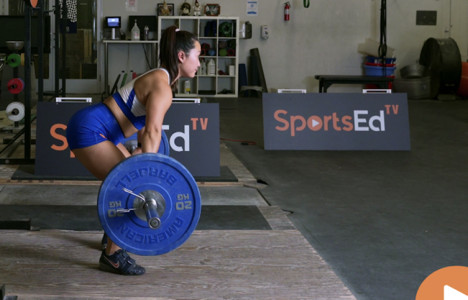
I have had visiting coaches come into our facility to watch our athletes train and ask how we got the athletes to lift with such good technique. My answer is, first you have to do a great job of coaching technique. You can’t expect your athletes to demonstrate good technique if they have not been taught effectively. After that, the technique that you allow becomes the technique that is presented. Make it known what is expected from them, insist on it, and don’t accept less.
Many times, technique errors can be improved almost immediately with a reduction in intensity, so let them know the focus is on technique first and intensity second, always. Many athletes want to reverse that, placing the primary emphasis on intensity and a lesser emphasis on technique. Explain to them that long term, their intensity will be limited by their technique, but an improvement in technique over time will allow a great intensity of training.
Next, here’s a simple approach that I found highly effective. Using squats as an example, I always insisted that my athletes squat to a parallel depth at a minimum. In our facility, we had 12 squat racks, and we proceeded through the workout set by set as a team, meaning that potentially we could have 12 athletes squatting simultaneously.
Let’s say 11 of those athletes are squatting to the proper depth, but one of them is above parallel. All I had to do was stop the group, coach the mistake, and then make the entire group restart the set. No harsh coaching, and no yelling, but the mistake would be quickly cleared up because of peer pressure. The offending athlete may have kept the same weight and simply gone deeper or they may have gone lighter to allow an acceptable range of motion, but the problem was quickly and simply fixed. If you don’t allow poor technique, it can be quickly eliminated.
The Snatch: Weightlifting's Mystery Lift
Check the SportsEdTV weightlifting library for detailed instructions on the squat:
6. Be Flexible as a Coach

Let me build on what I just said by adding this: Early in my career, if an athlete was struggling with demonstrating correct technique, I would keep coaching and coaching trying to get the athlete to be able to perform the exercise correctly, no matter how long it took. Finally, it dawned on me I was doing a disservice to that athlete. Using power cleans as an example, nearly every athlete I coached was able to demonstrate good technique in that movement in a reasonable amount of time. However, there were a few athletes, no matter how much we tried to correct the problem, just were never able to get to a point where they could consistently demonstrate good technique. As a result, their training intensity was consistently submaximal because they had to keep the intensity low just to attempt to demonstrate the correct technique.
Eventually, I realized it made sense to come up with an acceptable alternative. In the case of power cleans, we use that exercise because of the triple extension that occurs and for power development. However, we can also get triple extension and power development through the use of clean high pulls. Thus, for those few athletes that were unable to ever master the technique of a power clean, we would switch to having them perform high pulls. This allowed them to enjoy similar benefits to performing a power clean without the frustration of not being able to learn to consistently perform that movement correctly.
7. Give the Athlete Some Ownership
When a person has a sense of control, when they can make their own choices, their sense of ownership increases, and they have a greater buy-in with the program. As a result, I began allowing the athletes to choose between some pre-selected exercises rather than being limited to having to perform a specific exercise. For example, their workout might read squats/deadlifts or bench press/incline press; they could choose which of those two exercises they wanted to perform. That way it becomes more of their workout and not just a workout they were told to do. As long as the exercises require similar movement patterns with similar physiological demands, it can be advantageous to allow your athletes some autonomy with their training.
8. Make it Fun
Training done properly involves hard work that is tiring and physically demanding. There is no way around that. That does not mean it should be drudgery. Enjoy your athletes, encourage them, love them, let them know you care about them. Turn up the music (just not so loud it interferes with coaching or safety), enjoy the experience. Find ways to make them laugh, it’s okay to be lighthearted between sets. However, I always reinforced to my athletes that once your hands are on the bar, or you foot is on the line, it switches to all business, but between those times enjoy yourself and each other!
Conclusion
Optimal Performance Training For Football
These are just a few of the ways I found to be more effective as a coach during my career. The longer you coach the more ways you find to enhance the productivity of the time spent training. Don’t be afraid to try new things as long as they fit your training philosophy; you will find some of those choices work well and benefit your program while some prove to not be as effective and you move on from them. There is nothing wrong with that. There is no such thing as a perfect program; constantly look at ways to make yourself and your program better.





